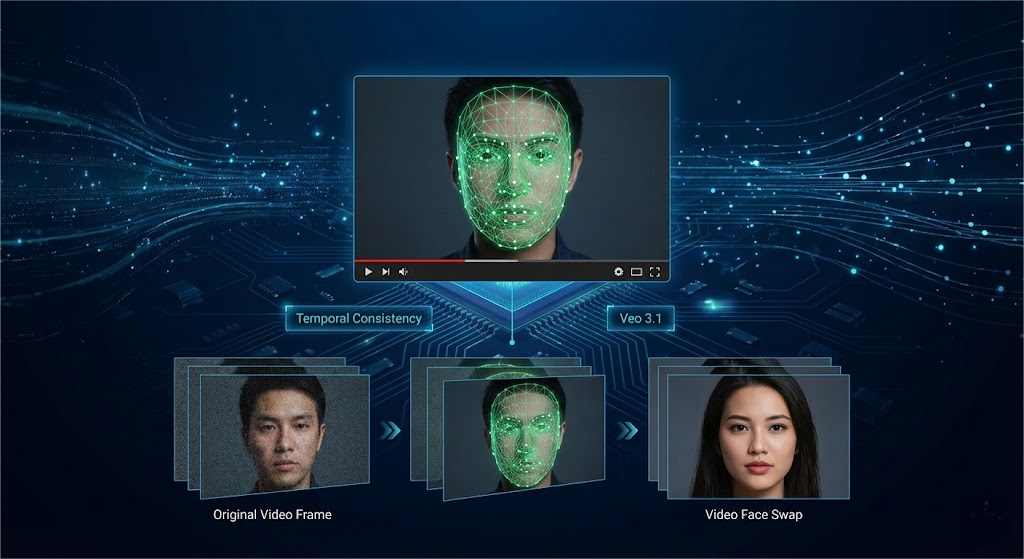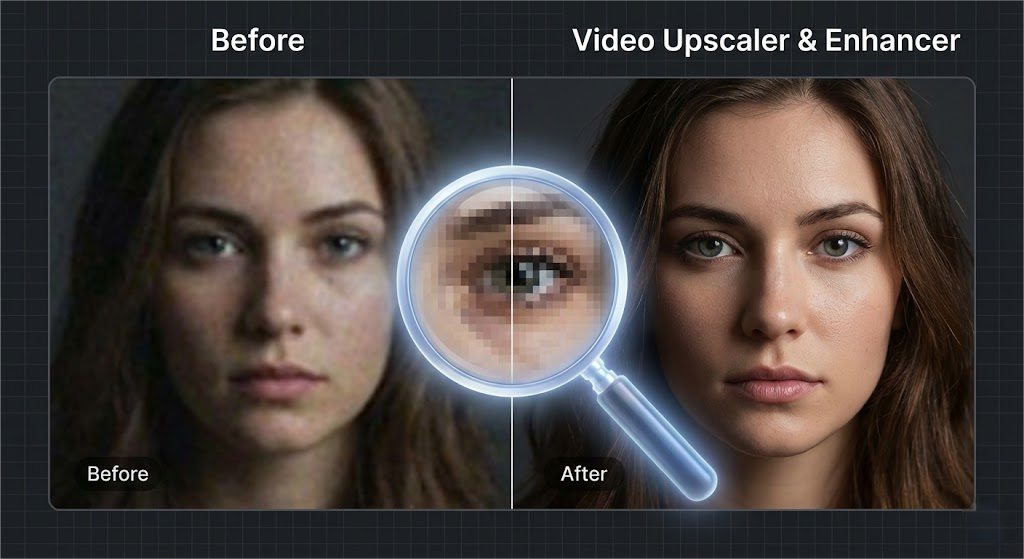The Ultimate Guide to Video Face Swap Technology: Mastering Voice Clones and Image Synthesis for Professional Content Creation
The emergence of high fidelity video face swap technology has irreversibly changed the pattern of digital content creation, and the tool was once the exclusive domain of millions of dollars of visual effects studios. Today, whether you are a filmmaker who aims to age actors, a marketing professional who localizes global activities, or a social media creator who wants to produce viral entertainment, the ability to seamlessly change your identity in mobile cameras will change the rules of the game. Unlike still photo editing, video synthesis requires time consistency, lighting physics and audio integration. This comprehensive guide will give you an in-depth understanding of modern AI technology and creative workflow. We will explore how the video face swap engine can maintain a sense of reality in thousands of frames, why integrated voice cloning is essential for real immersion, and how the basic skills of image face swap can contribute to better video effects. In addition, we will analyze the key support tool kits from the video intensifier to the watermark remover, which transform the original AI output into a masterpiece that can be broadcast.
The Mechanics of Motion: Engineering the Perfect Video Face Swap
Creating a convincing video face swap is much more complicated than manipulating a still photo, because it introduces a ruthless time dimension. In a single image, AI only needs to calculate the geometry and lighting at a specific time; However, in the video, the video face swap engine must perform 24 to 60 calculations per second, maintaining perfect alignment when the subject speaks, laughs or turns his head. The Holy Grail of this technology is "time consistency" - to ensure that the exchanged face will not flicker, shake or separate from the underlying head structure during the movement. If the tracking slides for a millisecond, the illusion is broken. Modern algorithms, such as those supporting advanced video character replacement, use complex optical flow technology and 3D mesh reconstruction to lock the new identity on the source role with surgical accuracy. An important obstacle in this process is to deal with "occlusion" - when the hand is waving in front of the face, or when the hair covers the eyes. The early deepfake technology often fails here, leading to the appearance of the face on the hand. However, the next generation model such as VEO 3.1 makes sure that the exchanged face is naturally located behind the foreground object by understanding the depth layer in the scene, thus completely changing this point. In addition, the environment around the subject is as important as the face itself. In order to achieve a real professional appearance, creators often use the video background remover to isolate the theme, so that they can transfer the role to a new setting without needing a physical green screen. This function is particularly important for the video face swap workflow in advertisements. In advertisements, a single actor can be placed in multiple positions in a digital way. The computing demand is huge, but the result is a smooth and realistic conversion, which can deceive the naked eye. As we continue to improve these models, the focus has shifted from just exchanging a face to fully reconstructing digital characters in 3D space.

The Symphony of Senses: Integrating Voice Clone and Lip Sync
If the audio is inconsistent with the new visual identity, the visual perfect video face swap may fail immediately. Human perception is multi sensory; If the audience sees a celebrity's face but hears a totally different voice, it will trigger the "horror Valley" effect and immediately break the immersion. That's why the integration of voice cloning technology is the most critical parallel progress in synthetic media. A powerful voice clone AI analyzes the short audio samples of the target's identity - capturing subtle differences in tone, voice and rhythm - to generate a synthetic voice model that can speak any text. This allows creators to exchange not only visual appearance, but also auditory existence, thus creating a complete "digital twin"
However, when new voices are combined with new faces, the challenge will deepen. If the words spoken by the voice clone track do not match the lip action of the video source, the result is like a foreign film with poor voice. In order to solve this problem, the professional workflow adopts lip synchronization technology. The AI reads the generated audio waveform and changes the mouth of the video face swap object to move with the said phonemes in a perfect rhythm. This three tuple - video face swap, voice cloning and lip synchronization - is the standard for high-end content localization. For example, a global brand can shoot an advertisement in English, and then use these tools to generate Spanish, Mandarin and French versions. The actor's face and voice can seamlessly adapt to each language. In addition, for more creative or comic projects, facial expression changers can be used to adjust emotional expression, turning neutral expressions into smiles or frowns to match the tone of cloned voices. This control level allows the fine guidance of digital actors, making the post production flexible and cost-effective.

The Foundation of Quality: From Image Face Swap to Video Enhancer
Although video is the ultimate goal, the journey to mastery often begins with still images. Understanding the principle of image face swap is the foundation, because it is the test field of video model. Many professionals use photo face swap tools to prototype how the target identity is mapped to the facial structure or lighting settings of specific actors, and then perform time-consuming and complete video rendering. In addition, image face swap is still a strong driving force for creating marketing assets (thumbnails, posters and social media trailers) attached to video content. The accuracy required for still images requires the viewer to have unlimited time to carefully check the pixels, which requires a keen eye for texture and blending.
A common problem in AI video generation is "resolution gap". The intensive processing required to exchange faces at a rate of 30 frames per second usually results in a slightly softer face or a lower resolution than the original 4K lens. In order to bridge this gap, modern creators' kits must include video upgrades and video intensifiers. These AI driven post processing tools act as a repair team; They analyze the exchanged lenses, remove digital noise, and "hallucinate" the missing high-frequency details to restore the sharpness of skin pores, eyelashes and hair. The video intensifier ensures that the exchanged face matches the sharpness of the surrounding environment. Similarly, for the attached static assets, the image intensifier is essential for magnifying the low resolution source photos to print ready quality. Senior creators can also try to use nano-banna Pro style or other art filters to unify the appearance of exchange elements. Without these enhancement steps, even the most accurate video face swap may look like a low budget trick. The cooperation between the switch engine and the upgrader ultimately provides the result of broadcast quality.

Professional Workflows: Ethics, Efficiency, and the faceswap-ai.io Ecosystem
With the accelerated development of video face swap and related technologies, the industry is shifting from disconnected tools to integrated ecosystems. For content creators, efficiency is crucial. Switching GIF face swap between one application, another for background removal, and a third for audio synthesis can result in friction and file compatibility errors. This is where comprehensive platforms such as faceswap-ai.io stand out as digital creation centers. By providing a unified interface, users can perform video character replacement, apply watermark removers to ensure clean client deliverables, and utilize image enhancement tools, faceswap-ai.io simplifies the entire production process. However, with the increase of power, the responsibility of moral use also comes with it. Professional creators understand that video face swap should be used for creative expression, authorized commercial localization, or imitation, rather than deception. Ensuring that the final output is not affected by the platform brand through a watermark remover is the standard of professional work, but the intention behind the content is still the burden of the creator. Looking ahead, we can expect more powerful features such as real-time exchange of live streams and video background removal tools that can easily handle complex transparency issues like smoke or glass. Whether you are using GIF face swap to create a quick and humorous emoji, or using voice cloning and video enhancement technology to create a serious corporate training video, the key to success lies in choosing the right platform. The era of synthetic media has arrived, and those who have mastered comprehensive tools from static images to dynamic audiovisual synthesis will define the future of stories
